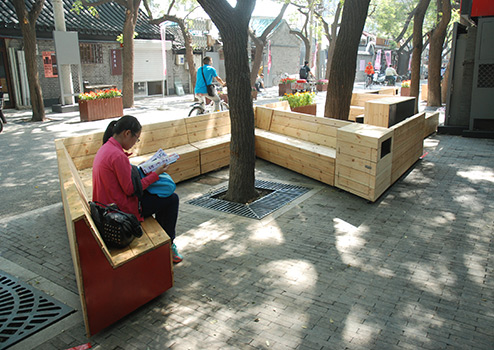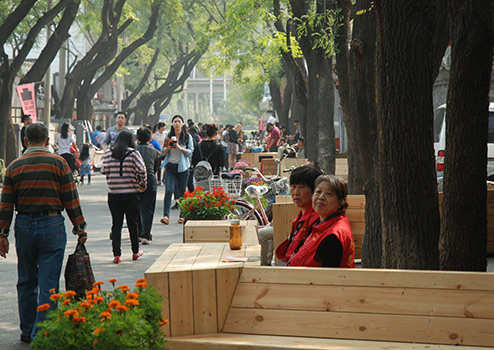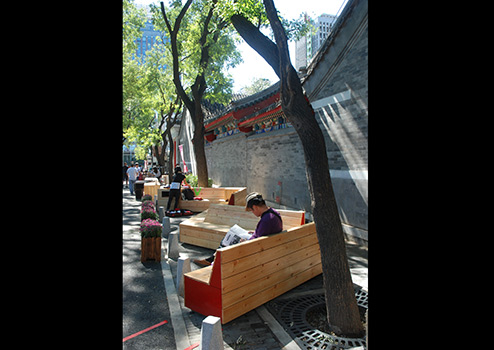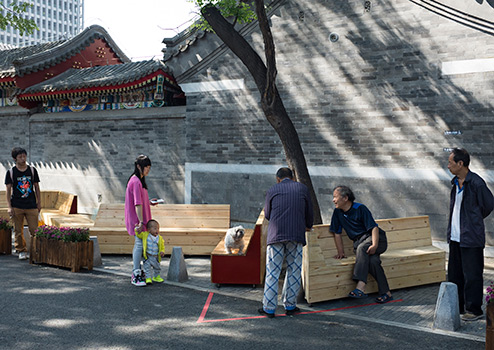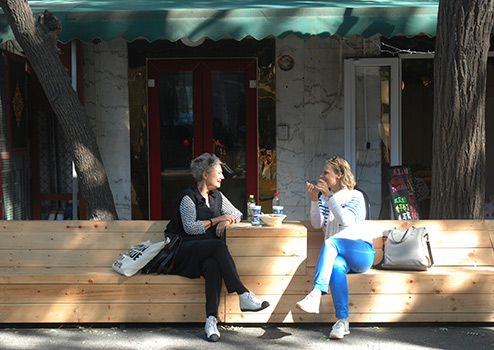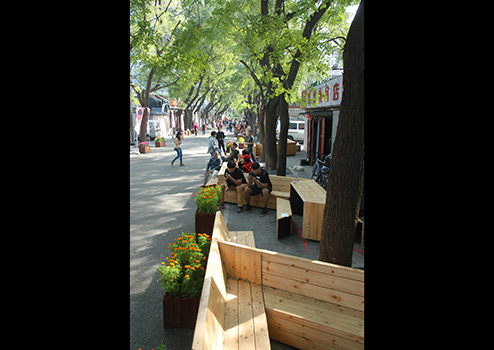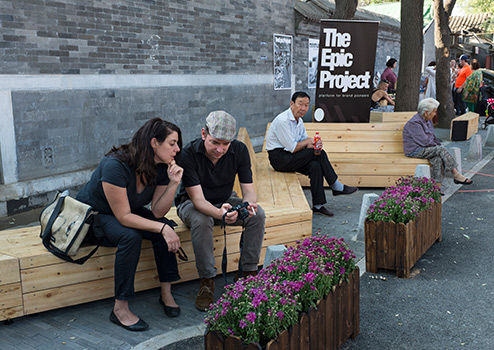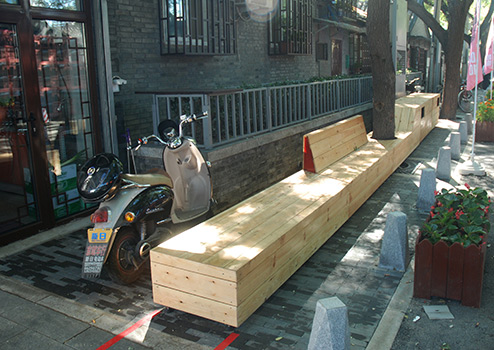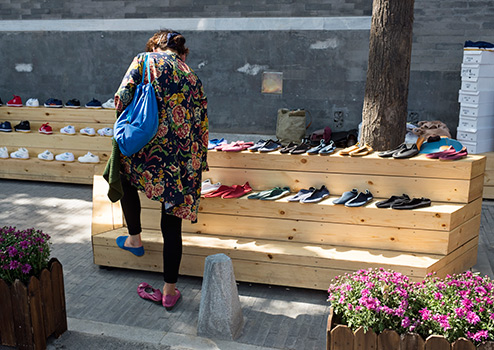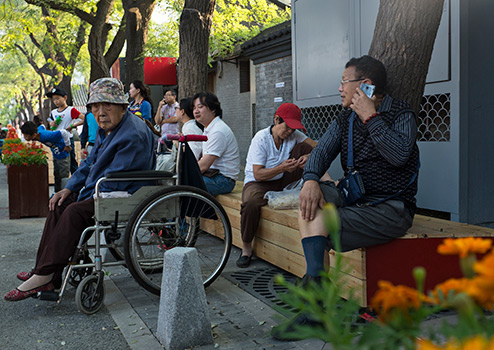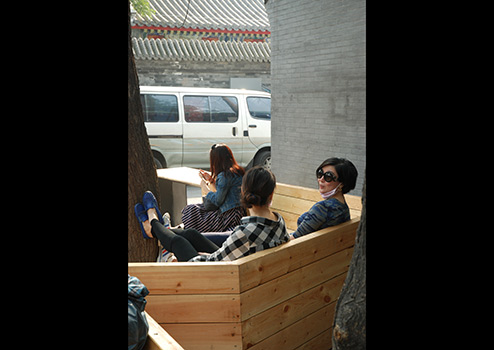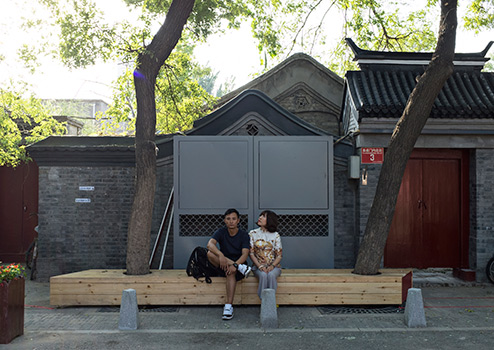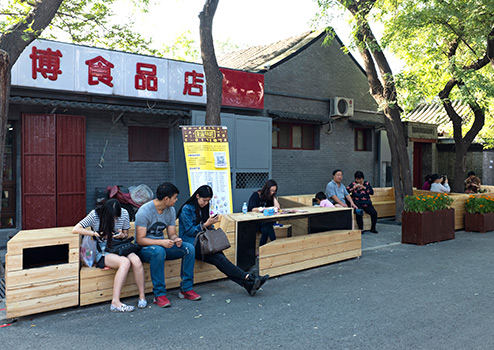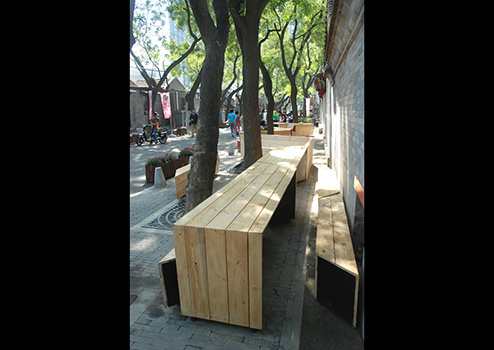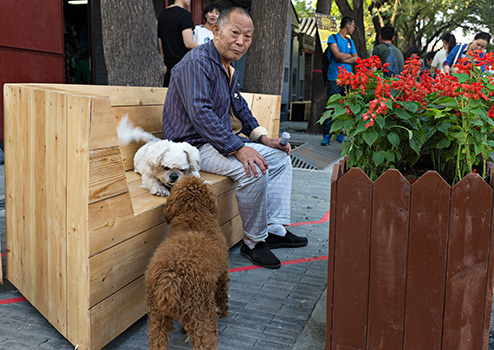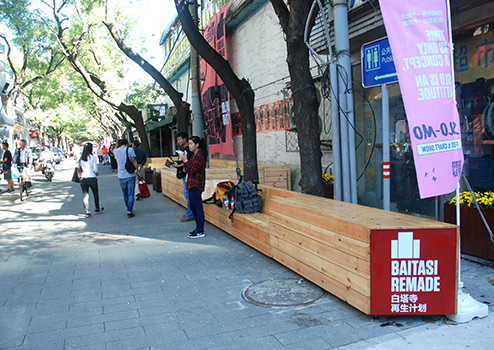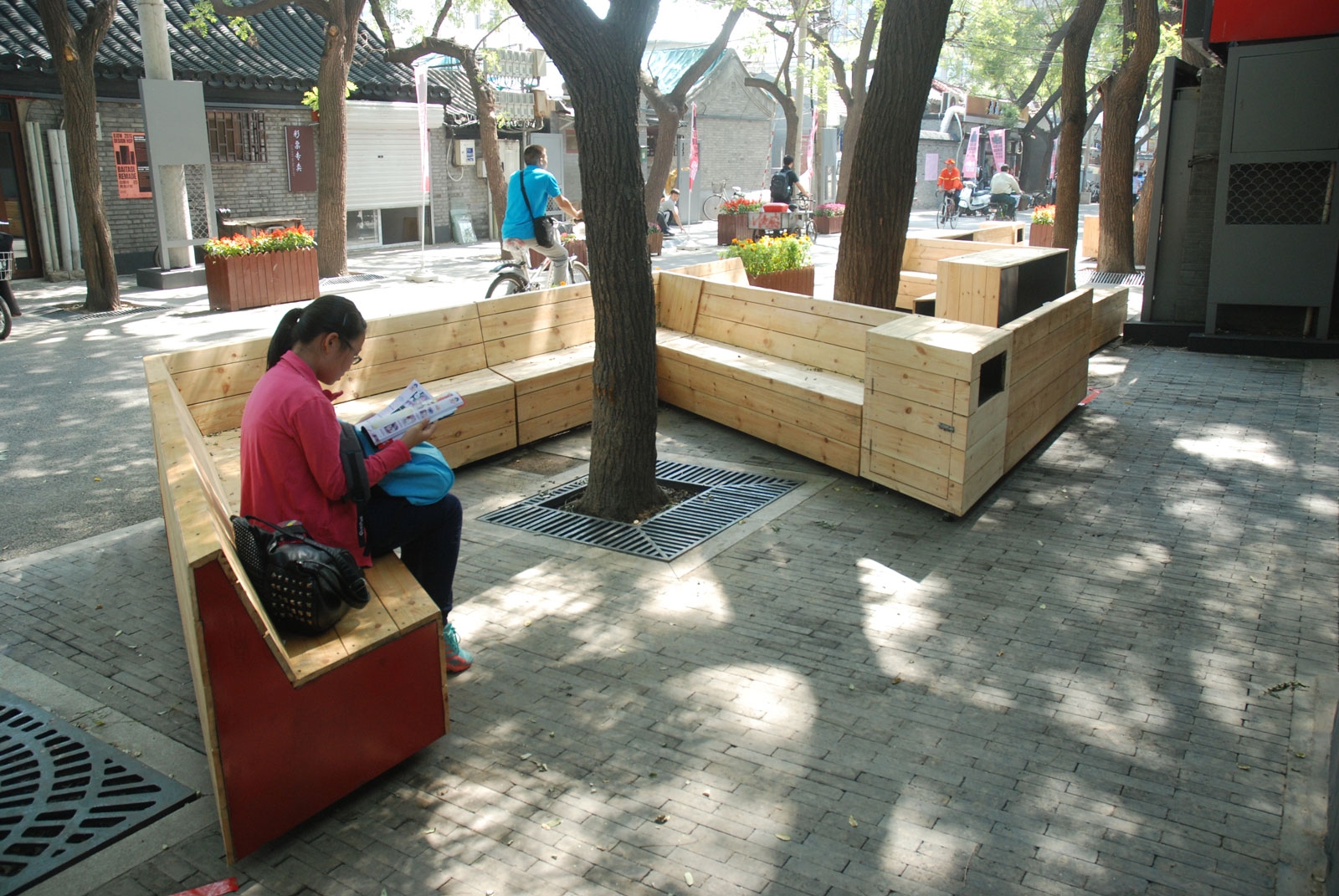

. . . . . SuperCounteR . . . . .
Supercounter is a public furniture installation that was realized on the narrow street leading to the Lu Xun museum in Beijing’s Baitasi district. Originally asked to design structures for a 3 days slo mo market event, BaO responded by proposing to broaden the scope of the project and create a multipurpose street furniture that could activate the hutong during the event, the whole Design Week and beyond. A 170m long winding furniture makes its way between the century old trees in order to enable informal gatherings, grassroots street's appropriation, and collectively improvised events. The temporary installation is an optimistic celebration of the Beijing’s hutong life in which neighbors meet several times a day in the streets to discuss, gossip, or debate the issues of the day. The supercounter was therefore envisaged more as an infrastructure enabling these kinds of encounters than as a designed object in itself. The issue was not the bench or the table design, the issue is to have a place to sit, a place to eat, a place to pause.
The length of the supercounter, on which potentially several hundred people can gather, is a conscious play and embrace of the public and urban scale. Within a single gesture stretching on the whole length of the hutong, a series of situations were enabled depending on which level of activity was required. Tables were set in front of restaurants, some benches surrounded a singular tree, some other benches faced the street to watch passerby, counter-like elements permitted market activities, stair-like elements created urban alcoves.
Originally designed for the Beijing design Week as a temporary installation, the architects intention was to use the event as a springboard and testing ground for a longer-term strategy. Half of the supercounter will be reconfigured into smaller archipelagos of fixed furniture along the Lu Xun Museum street while the other half will be dismantled into smaller modules and spread all across Bataisi district to create other points of intensities in different chosen locations.
. . . . . . . . . . . . . . . . . . . . . . . . . . . . . . . . . . . . . . . . . . . . . . . . . . . . . . . . . . . . . . . . . . . . . . . . . .

